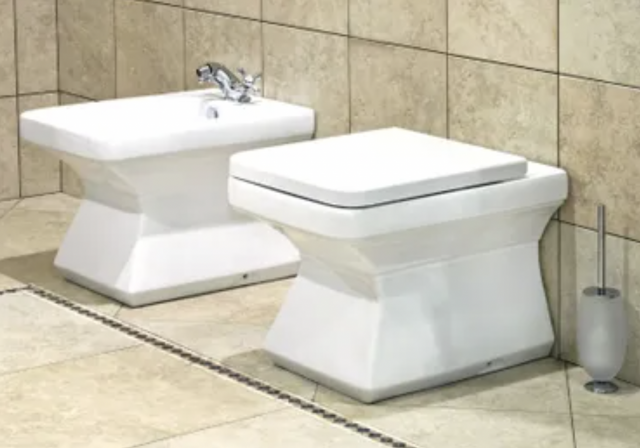In most developed countries around the world, bidets are the most common method of cleaning oneself after using the bathroom. But if you talk to someone who has used toilet paper their entire life, they’re probably going to be skeptical about the benefits of using bidets. They may even be extremely reluctant to use a bidet because they have preconceived notions about why it would be a bad experience.
Everyone is entitled to their own opinion and their own preferences, especially when it comes to bathroom activities. But the most common reasons why people avoid these convenient bathroom fixtures don’t make any sense.
Let’s explore.
Why People Avoid Bidets
These are some of the biggest reasons why people claim to avoid bidets:
1. They’re hard to install. One of the most common reasons behind bidet avoidance is the idea that they are hard to install. And there is some truth to this one. If you’re thinking about a standalone unit in an existing bathroom, you’ll need to run a new water line and have adequate space for the unit. Not all bathrooms are big enough or equipped adequately to make this an easy job.
Here’s why this reason is problematic: standalone units are no longer the norm for new purchasers. Today, there are thousands of seat-mounted bidets that are ridiculously easy to install. Even if you have no prior plumbing experience, you should have no trouble following the instructions and getting the bidet operational in less than an hour.
2. They’re expensive. Another complaint is that bidets are expensive. Again, there’s a grain of truth here. Some bidets are expensive, and if you’re looking for one of the best and most luxurious models on the market, you might end up paying thousands of dollars. If you want to totally remodel your bathroom and have a standalone unit, you might even end up paying tens of thousands of dollars (though your remodeling will involve much more than just a bidet).
But if you’re looking for a simple model that easily installs on your existing toilet seat, you won’t pay nearly that much. You can usually find models for just a few hundred dollars or less.
3. They waste water. If you’re environmentally conscious, you might be concerned about the amount of water used by a bidet. After each trip to the bathroom, you’ll be spraying yourself with a jet of water for several seconds at a time. This can add up to be a lot of extra water consumption for your household, especially if you have multiple people using the device.
But in reality, these fixtures don’t use that much water. It’s far less water than you use washing your hands or even flushing the toilet; also, in most cases, it’s better for the environment to use a small amount of water then a large amount of paper.
4. You have to use toilet paper no matter what. That leads us to our next complaint. Bidets are often touted as being able to reduce your toilet paper consumption, leading to environmental benefits. But naysayers insist that you have to use toilet paper no matter what, to dry yourself off. This is true. However, you’ll use far less toilet paper drying off the water than you will trying to wipe yourself clean.
5. Toilet paper is cheap. For those who care more about their personal budgets than the environmental impact of toilet paper, there’s a common complaint That toilet paper is cheap – so there’s no real reason to try and save it. This is only partially true. The average person uses 20,000 sheets of toilet paper per year. That’s about 100 rolls per year. Combine toilet paper needs with other disposable paper needs, and the average amount spent is $120 per year, per person. If you have a family of 4, that’s nearly $500 per year spent on disposable paper products. That’s certainly affordable for most people, but it’s a big chunk of money.
6. Bidets are uncomfortable. Comfort is a matter of personal preference. The problem with saying that bidets are uncomfortable is that most people saying it have never used one. What they mean to say is they think bidets are uncomfortable. If they just gave the experience a fair shot, they might walk away with a different perspective.
7. Bidets aren’t sanitary. Some people continue to insist that these fixtures aren’t sanitary and that toilet paper can do a better job of cleaning. But even your intuition should guide you differently on this subject; if you got fecal matter on your hands, would you simply wipe them off with a napkin or spend some time washing them under the sink?
The Bottom Line
The bottom line here is that bidets have a robust collection of benefits for users. They’re inexpensive, easy to install, cleaner than toilet paper, and more environmentally friendly.
Though not everyone will love the bidet experience the first time, most of the objections to bidets are completely unfounded.


